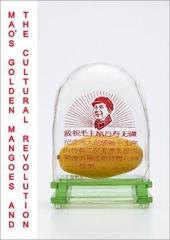
|
Mao's Golden Mangoes and the Cultural Revolution
Hardback
Main Details
| Title |
Mao's Golden Mangoes and the Cultural Revolution
|
| Authors and Contributors |
By (author) Alfreda Murck
|
| Physical Properties |
| Format:Hardback | | Pages:248 | | Dimensions(mm): Height 240,Width 170 |
|
| Category/Genre | Asian and Middle Eastern history |
|---|
| ISBN/Barcode |
9783858817327
|
| Classifications | Dewey:951.056 |
|---|
| Audience | | General | | Professional & Vocational | |
|---|
| Illustrations |
100 Colour, 50 B&W
|
|
Publishing Details |
| Publisher |
Scheidegger und Spiess AG, Verlag
|
| Imprint |
Scheidegger und Spiess AG, Verlag
|
| Publication Date |
27 March 2013 |
| Publication Country |
Switzerland
|
Description
In August 1968, the Pakistani foreign minister visited Beijing and presented Chairman Mao with a crate of mangoes. Apparently, Mao immediately sent the mangoes, a fruit unkown so far in China, as a gift to the 'Worker-Peasant Mao Zedong Thought Propaganda Teams' deployed into Quinghua University to put down warring factions of Red Guards and occupy the campus, with the implicit political message that workers were now made managers of education. The exotic fruit were then distributed over the following weeks to various factories. Thus the mangoes, perceived as coming from Chairman Mao, transformed from mere fruit into near-divine symbol. They were celebrated by the workers as tokens of Mao's love and compassion and worshipped as a kind of religious relic. The Golden Mango powerfully symbolised the slogan "The working class must be the leaders in everything", and soon appeared on all kinds of household products. The new book Mao's Golden Mangoes and the Cultural Revolution illustrates how factory workers tried to preserve Chairman Mao's precious gift, how the mango transformed into a religious symbol, and how the political spectacle of the 1968 National Day Parade featured the mango.
Author Biography
Alfreda Murck received her Ph.D. in art history from Princeton University. She has been a curator at the Metropolitan Museum of Art in New York 1978-91. She lives and works in Beijing as an independent scholar.
|